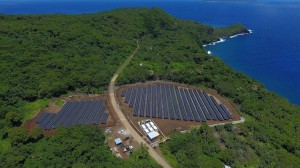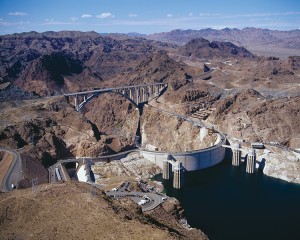Clean Energy: Ready for 100
Wednesday, July 17th, 2019July 17, 2019
To help reduce pollution in the United States, a Sierra Club program called “Ready for 100” is encouraging communities and individuals to commit to the use of 100 percent renewable energy sources. The Sierra Club, founded in 1892 by the naturalist John Muir, is an organization that works to protect the environment. Ready for 100 is asking business, civic, community, and religious leaders, as well as families and students, to help achieve the goal of complete nationwide reliance on clean, renewable energy by the year 2050.
 Renewable energy comes from such sources as the sun, wind, moving water, heat beneath the ground, and plants. Such energy sources are considered “clean” because they cause little or no pollution, and they differ from fossil fuels such as coal, oil, and natural gas. Burning fossil fuels causes air pollution and acid rain, and also releases large amounts of carbon dioxide and other greenhouse gases. The gases trap heat in Earth’s atmosphere, contributing to global warming and climate change.
Renewable energy comes from such sources as the sun, wind, moving water, heat beneath the ground, and plants. Such energy sources are considered “clean” because they cause little or no pollution, and they differ from fossil fuels such as coal, oil, and natural gas. Burning fossil fuels causes air pollution and acid rain, and also releases large amounts of carbon dioxide and other greenhouse gases. The gases trap heat in Earth’s atmosphere, contributing to global warming and climate change.

Since November 2016, solar panels and battery systems have provided 100 percent of the energy needed to power the island of Ta’u, seen here, in the U.S. Pacific territory of American Samoa. Credit: © SolarCity
There are many benefits to using clean energy sources. They can provide communities with cleaner air and water, lower energy costs, greater energy independence, and greater local ownership of energy systems. More than 50 nations around the world, including Brazil, Canada, and Norway, already get more than 50 percent of their energy supply from renewable sources. Costa Rica expects to be using 100 percent renewable energy by 2021. The U.S. state of Hawaii has promised to be Ready for 100 by 2045, and recent California legislation requires the country’s most populous state to achieve 50 percent renewable energy use by 2030. Such worldwide cities as Munich, New York, and Sydney are also well beyond the 50 percent mark, and they are fast approaching total reliance on renewable energy. To reach 100 percent, the amount of energy generated from renewable sources (for such uses as electric power, heating and cooling, and transportation) must equal or exceed the annual energy consumed.

Hoover Dam on the Colorado River has been providing renewable hydroelectric energy in the southwestern United States since 1935. Credit: U.S. Department of Transportation
So far, 182 U.S. towns and cities from coast to coast have committed to 100 percent renewable energy use by 2050. Aspen, Colorado (since 2015); Burlington, Vermont (2014); Georgetown, Texas (2018); Greensburg, Kansas (2013); Kodiak Island, Alaska (2012); and Rock Port, Missouri (2008) have already hit the 100 percent renewable energy mark, leading the push for cleaner energy and a healthier future.


